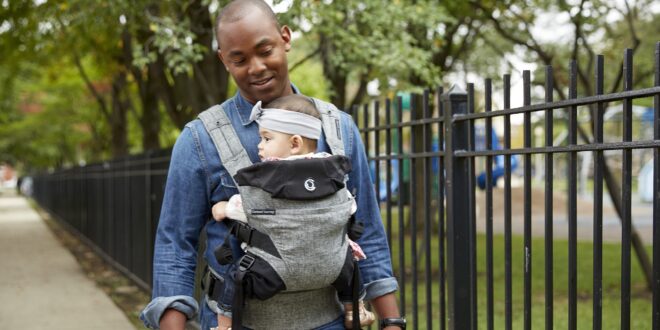Did you know that improper carrying techniques can affect a child’s hip development? According to the International Hip Dysplasia Institute, hip dysplasia affects 1 in 1000 newborns. Positioning matters more than most parents realize. It’s not just about comfort but also long-term health.
Key Points:
- The M Position supports healthy hip development.
- Incorrect positioning can lead to hip issues.
- Ergonomic carriers make positioning easier.
- Adjusting for comfort benefits both parent and child.
- Awareness reduces risks linked to poor support.
What Is the M Position and Why It Matters
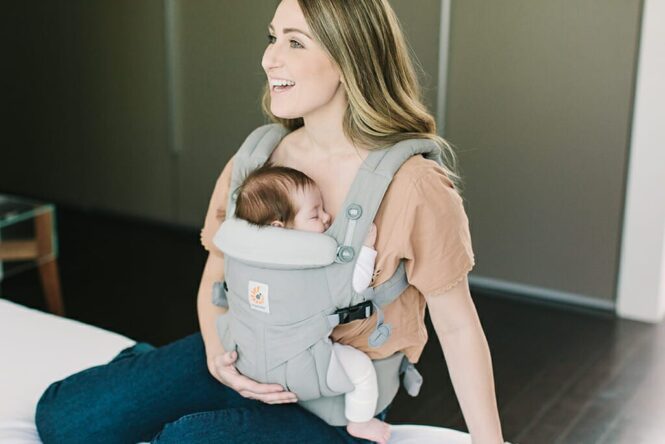
The M Position refers to the natural way a child’s legs should rest when held. Their knees are higher than their bottom, forming an “M” shape. This posture keeps hips in a healthy, stable position.
When a child is born, their hip joints are still developing. Supporting them in an M Position helps promote proper growth. Without it, the risk of hip dysplasia increases, which may require medical intervention later. The shape allows the hips to sit in their sockets correctly, aiding natural development.
Fun Fact: Did you know that in many traditional cultures where babywearing is common, hip dysplasia rates are significantly lower? This is because the M Position is a natural part of their carrying styles.
How to Achieve the M Position with Baby Carriers
Choosing the right gear can make all the difference. Ergonomic baby carriers, like those found at Bizzi Growin, are designed to support the M Position naturally. Look for wide, padded seats that allow the legs to spread comfortably.
Key Features to Look For:
- Seat Width: Should support from knee to knee.
- Knee Height: Ensure knees are higher than the hips.
- Back Support: A snug, upright posture keeps the spine aligned.
When adjusting the fit, make sure your child’s legs are not dangling straight down. Adjust the straps until the child forms that tell-tale “M.”
Benefits of the M Position for Child Development
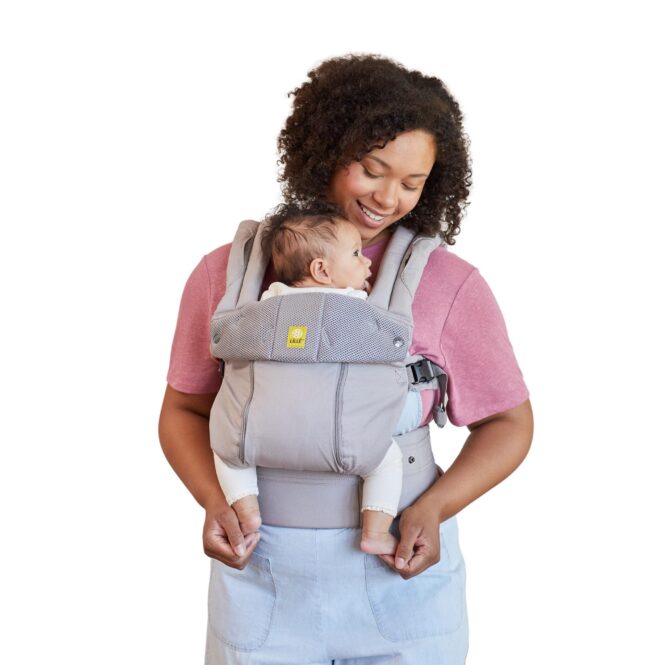
Keeping your child in the M Position isn’t just about comfort. It offers real health benefits that influence their growth and physical well-being.
- Promotes Healthy Hips: Reduces the risk of hip dysplasia.
- Spinal Support: Maintains natural curvature of the spine.
- Enhanced Comfort: Less strain on growing joints.
- Better Sleep: A secure, ergonomic hold often leads to longer naps.
When hips are well-supported, it creates a domino effect on overall development. Healthy hips lead to better spinal alignment, which supports muscle development and coordination.
Common Mistakes Parents Make with Positioning
Many well-meaning parents make simple mistakes that can impact hip health. Being aware of these can help you avoid discomfort and potential health issues.
Mistakes to Watch Out For:
- Narrow Seats: Carriers with narrow bases let legs dangle, which isn’t ideal.
- Loose Fit: A sagging fit can lead to poor spinal alignment.
- Forward Facing Too Soon: Facing outward doesn’t support the hips as well as inward-facing positions.
Quick Fixes:
- Choose wide, ergonomic seats.
- Keep the fit snug, with no slouching.
- Wait until the child has strong neck control before trying outward-facing holds.
How to Adjust for Different Ages and Sizes
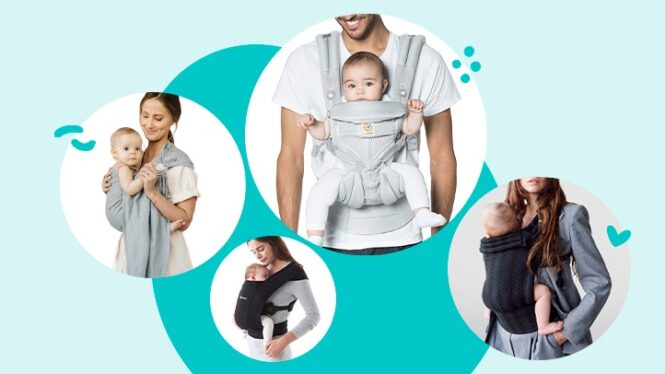
A newborn has different needs than a toddler. Adjust your carrier accordingly to ensure continuous support.
For Newborns:
- Use an infant insert if needed.
- Ensure the seat supports from knee to knee.
- Keep the head supported.
For Older Babies:
- Wider seats as hips develop.
- Adjust shoulder straps for parent comfort.
- Allow arms out if desired, once they have control.
Growth spurts can sneak up fast, so regularly check the fit as your child grows.
Signs Your Child Is Positioned Correctly
How do you know you’ve got it right? Look for these signs:
- M Shape: Knees above the bottom, legs spread.
- Visible Airway: Chin off the chest.
- Snug Fit: No slouching, close to the parent’s body.
- Comfort: No red marks or pinched skin after removal.
Trust your instincts. If something feels off, it probably is.
Tips for Parents New to Babywearing
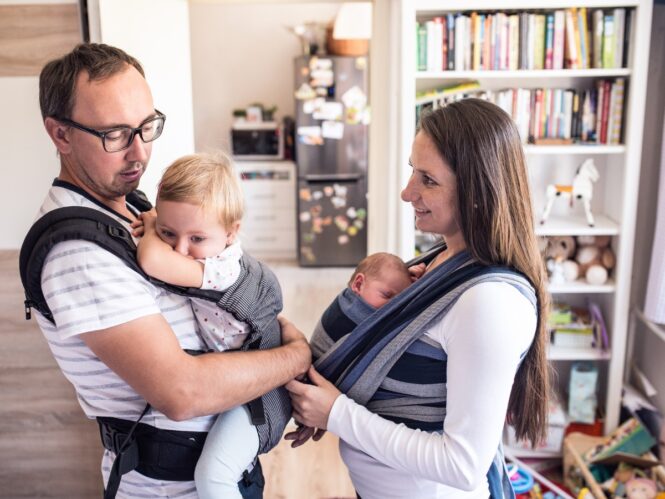
If you’re new to babywearing, don’t worry. It gets easier with practice.
Quick Tips:
- Practice Without the Child: Learn adjustments first.
- Use a Mirror: Helps you see the fit from all angles.
- Get Support: Join a local babywearing group for tips.
- Adjust Regularly: As your child grows, their needs change.
Taking a few extra minutes to adjust everything properly can save you discomfort later.
The Role of Comfort for Both Parent and Child
While focusing on the child’s position, don’t forget your own comfort. A poorly adjusted carrier can strain your back, shoulders, and neck.
For Parent Comfort:
- Distribute weight evenly across both shoulders.
- Use lumbar support if available.
- Adjust straps so that the child’s weight feels close to your body.
When both parent and child are comfortable, outings become more enjoyable and stress-free.
Common Myths About Babywearing and the M Position
There are several misconceptions surrounding the M Position. Let’s clear a few things up:
- Myth: “Forward-facing is always bad.”
- Reality: It’s fine if done correctly and for short periods.
- Myth: “Tight carriers hurt babies.”
- Reality: A snug fit supports proper posture and prevents slouching.
- Myth: “All carriers support the M Position.”
- Reality: Only ergonomic designs offer full support.
Debunking myths helps parents make informed choices.
When to Seek Professional Advice
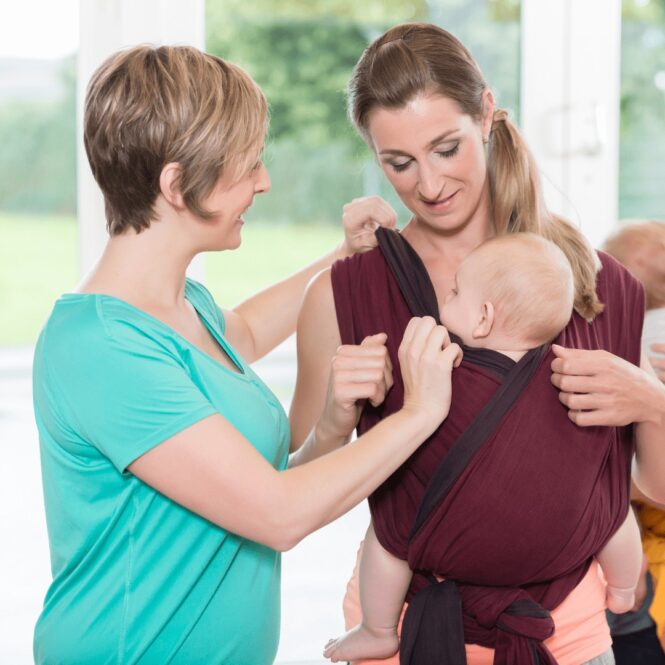
If you notice:
- Uneven leg length.
- Clicking sounds in the hips.
- Consistent discomfort despite adjustments.
Consult a pediatrician. Early intervention can prevent long-term issues. Pediatric physiotherapists can also guide proper positioning.
Final Thoughts
The M Position isn’t just a trend; it’s grounded in science. Proper support means healthy hips, a strong spine, and a comfortable child. Plus, it makes carrying easier for you.
With the right carrier and a bit of practice, you’ll master it in no time. And both you and your child will be happier for it.
 Imagup General Magazine 2024
Imagup General Magazine 2024
